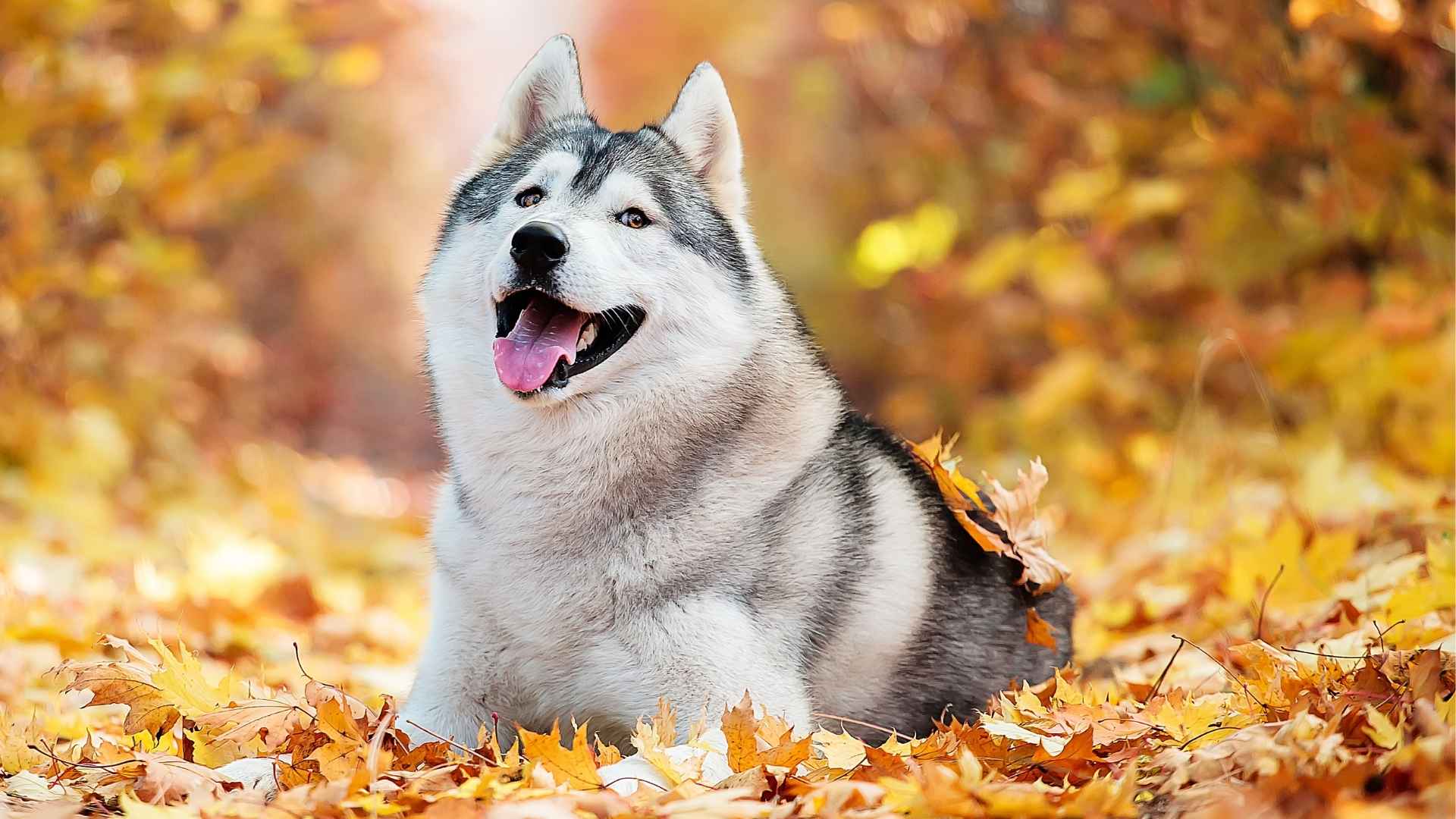Ever heard of the term “blowing coat”? It’s not a grooming salon mishap—it’s the dramatic seasonal shed when double-coated dogs lose enough fur to knit a sweater (or three). These furry marvels don’t just flaunt volume for style points; their two-layered coats are evolutionary armor, built to withstand everything from icy tundras to summer heatwaves. And here’s a shocker: the undercoat can actually cool your dog in the summer by trapping cold air near the skin. Nature, you’re wild.
Double-coated breeds—from energetic Border Collies to regal Newfoundlands—are more than just fluff and floof. Their coats are fine-tuned survival tools, offering weather resistance, protection, and a grooming challenge that keeps even seasoned pet parents on their toes. As more dog lovers embrace active outdoor lifestyles, these hearty breeds are becoming increasingly popular—and increasingly misunderstood.
Dive in to discover what makes double-coated dogs so uniquely equipped—and what it really takes to care for them.
Double-Coated Dog Breeds
1. Chow Chow

The Chow Chow stands out in the world of double-coated dog breeds with its lion-like mane and dignified charm. Beneath the fluff lies a heavy coat composed of a coarse outer layer and a fluffy undercoat, offering impressive insulation in a cold climate. This ancient breed thrives with daily brushing using a deshedding brush to remove stray hair and avoid tangles.
The PDSA reports that although aloof with strangers, Chow Chows are deeply loyal to their humans. With their dense inner coat and harsh topcoat, these pups shed seasonally and require consistent grooming, especially around the neck where tangles tend to form. One fascinating feature? Their blue-black tongues—truly one-of-a-kind in the canine world!
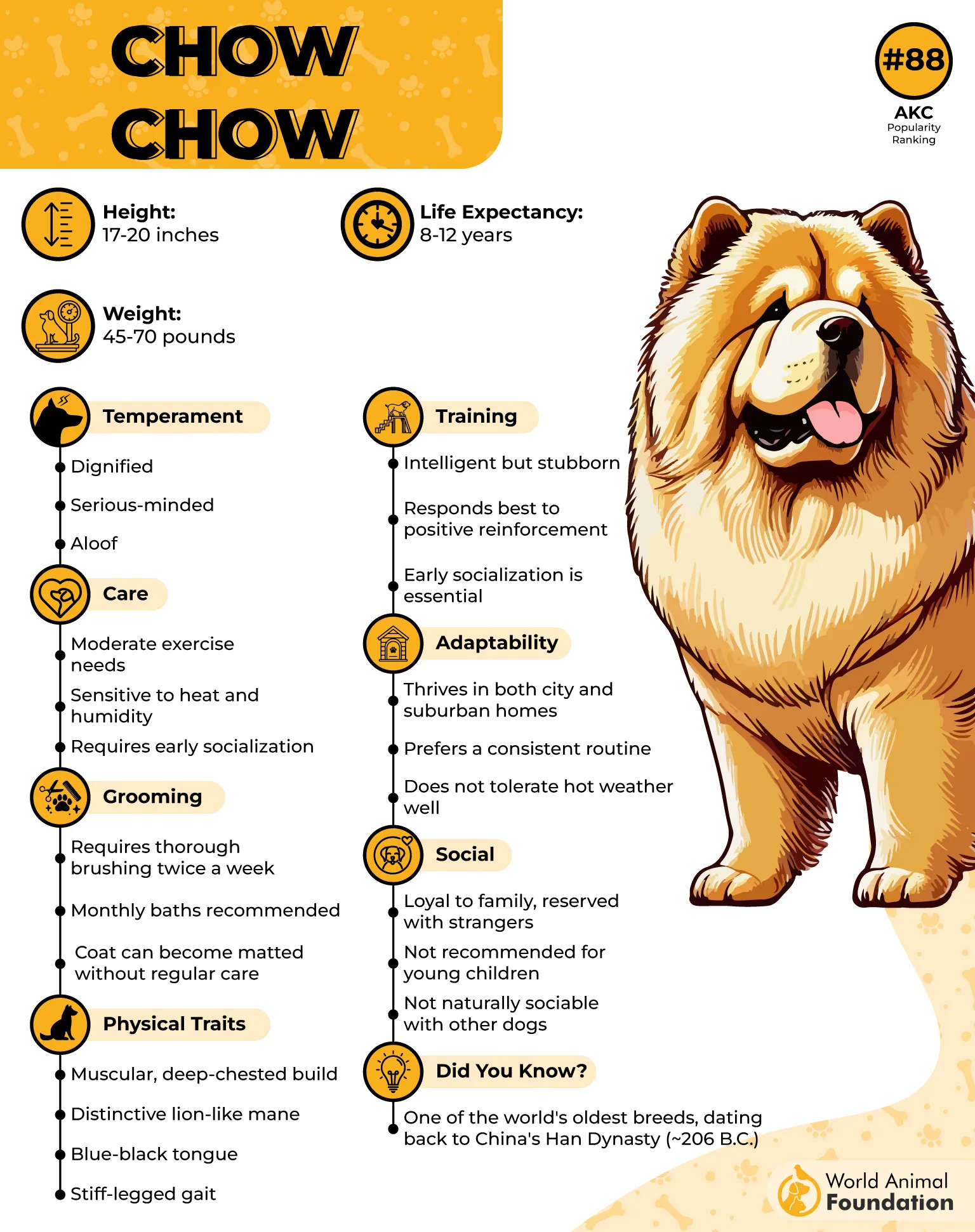
Never shave double-coated dogs like the Chow, as doing so disrupts their natural temperature control and exposes them to ultraviolet rays. Instead, daily brushing with the right tools helps maintain their impressive double coat. The breed’s dignified temperament and rich heritage make them a stunning, albeit high-maintenance, companion.
With their deep-set eyes and proud posture, Chow Chows often resemble walking teddy bears—but don’t be fooled. Under all that fur is a strong-willed guardian who thrives on respect and routine.
2. Australian Shepherd

Vibrant and full of energy, the Australian Shepherd sports a medium-length double coat that mirrors their zest for life. With a weather-resistant outer coat and heavy undercoat, these herding pros are built for both rough weather and action-packed days. Their heavy coat sheds seasonally, demanding weekly combing to remove shedding fur and avoid tangles.
Aussies are known for their kaleidoscope of coat colors and often have piercing blue eyes—a show-stopping combo among coated dog breeds. Their double coat isn’t just for looks; it helps regulate body temperature through all seasons, making shaving unnecessary and even harmful. The undercoat traps cool air during summer, while the top coat blocks sun exposure and repels dirt.

PetMD notes that proper grooming with tools like an undercoat rake and wide-spaced comb ensures the dog’s coat stays healthy and tangle-free. One quirky trait? They’re nicknamed “Velcro dogs” for their intense loyalty and constant shadowing of their favorite humans—a trait as endearing as it is entertaining.
Their brains match their beauty—Australian Shepherds thrive with mental stimulation and activity, making them ideal for agility, obedience, and even canine sports.
3. Shih Tzu
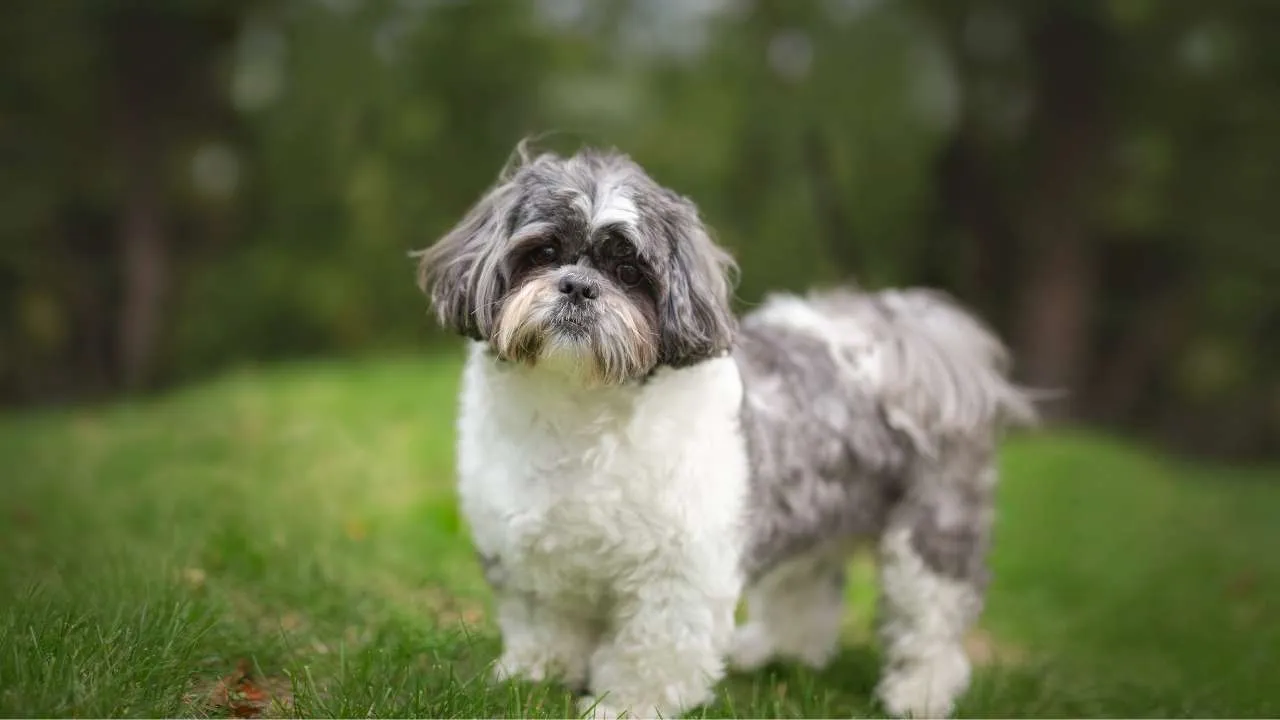
The Shih Tzu may be petite, but this little lion dog boasts a majestic double coat of long, flowing hair paired with a light undercoat. While often styled short for convenience, their natural coat type requires frequent upkeep to prevent tangles, especially during hair loss season. Unlike other double-coated dogs, Shih Tzus don’t blow their coat dramatically, but regular brushing is still key.
Their luxurious coat offers protection while the soft undercoat adds plush volume. Despite their small size, their grooming needs rival larger dog breeds. Weekly combing and occasional trimming help maintain their signature coat, especially around the face and ears.
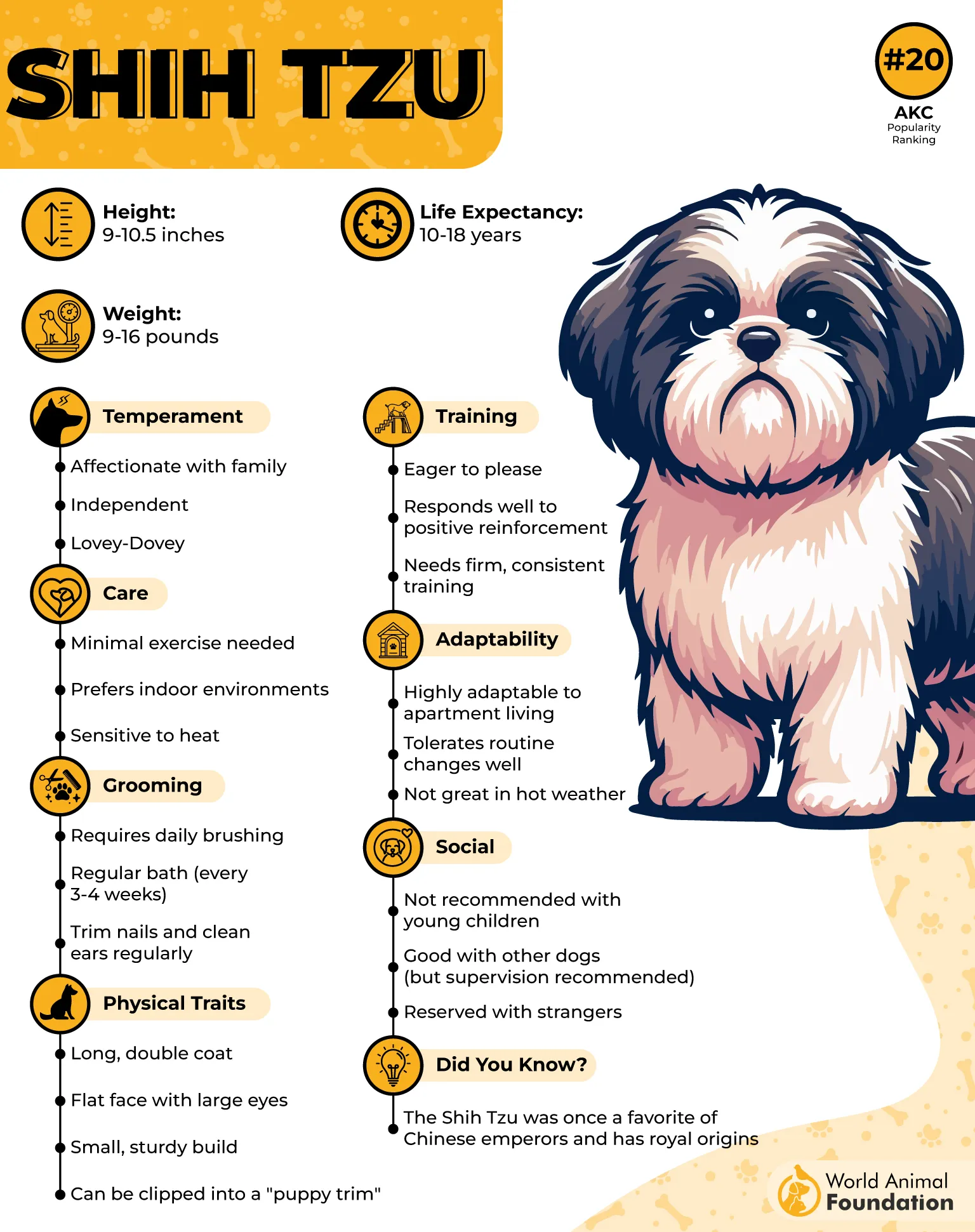
What makes Shih Tzus truly unique? Their royal lineage—these dogs were bred as lap warmers for Chinese emperors! And with their charming expressions and affectionate nature, it’s no surprise they still reign in homes worldwide. Grooming these coated dogs with care protects the skin underneath and keeps their double coat looking regal and healthy.
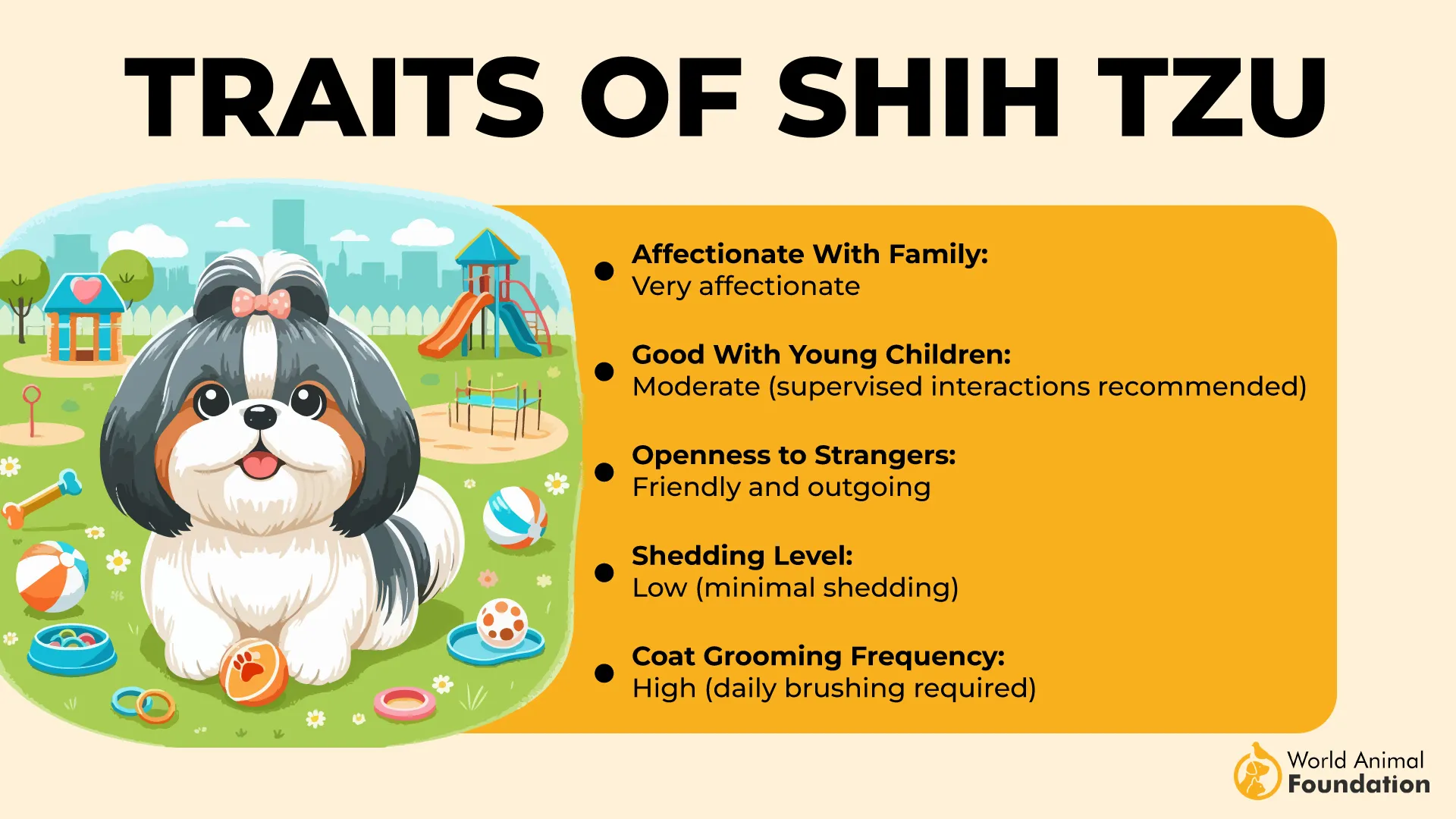
If you’re seeking a dog that combines elegance with endless snuggles, the Shih Tzu is proof that double-coated dogs don’t need to be big to make a grand impression.
4. Golden Retriever
Golden Retrievers are among the most beloved dog breeds—famous not only for their loyalty but for their shimmering, dense coat. Beneath their soft outer coat lies a heavy undercoat that offers thermal protection year-round.
This breed’s double coat works like natural armor, keeping them comfortable in both cold temperatures and warm weather.
Most double-coated dogs tend to shed, but Golden Retrievers take it to the next level during hair loss season. Brushing with a slicker brush a few times a week—or daily during heavy shedding—helps remove fur and maintain their glossy appearance.
Despite their popularity, many owners are unaware that shaving this coated dog can disrupt their cooling system and lead to skin issues like sunburn or even skin cancer.
The coat’s beauty comes with responsibility: regular grooming prevents mats, distributes natural oils, and protects the dog’s skin from UV rays. A wide-spaced comb works wonders in reaching the woolly undercoat.
Golden Retrievers have a water-repellent top layer, originally bred for retrieving game in icy waters, making them not just charming but highly functional too.
5. Pomeranian
Tiny but bursting with personality, the Pomeranian is a fluffy powerhouse among coated dog breeds. This toy breed sports a two-layer coat—a coarse top coat and a dense, woolly undercoat—that gives them their signature puffball silhouette. Despite their size, they require serious grooming attention, especially when they begin to shed their undercoat.
These dogs benefit from weekly brushing to remove stray hair and prevent tangles from forming near the neck, legs, and tail. A de-matting tool or deshedding rake helps manage their heavy undercoats without damaging the protective layer. While small, Pomeranians have a surprisingly big grooming routine compared to other dogs of similar size.
Pomeranians should never be shaved, as doing so disrupts the function of their two coats and increases sunlight exposure. Instead, daily brushing keeps their fur healthy, soft, and properly insulated against both cold and hot weather.
Their “fox face” and alert expression are enhanced by a standout ruff of fur around the neck, earning them frequent comparisons to miniature lions with an impressive fluff.
6. Siberian Husky
The Siberian Husky is the poster pup for double-coated dogs—bred to endure sub-zero treks across snowy landscapes. According to Hillspet, their iconic coat features a thick, plush undercoat beneath a coarse top coat that shields against harsh weather and traps warmth during low temperatures.
Unlike single-coated dogs, Huskies experience an intense hair-loss season called “blowing coat,” where tufts of stray hair release in waves.
Brushing with a deshedding rake several times helps remove shedding fur and prevent tangles. These working dogs thrive best with daily grooming using a slicker brush to maintain their dense coat and distribute raw oils.
Surprisingly, this breed also benefits from its double coat in warm weather—its two layers act as insulation, keeping cool air near the skin. For this reason, experts stress that you should never shave dense-coated dogs like the Husky, as it can harm their skin and coat integrity.
Siberian Huskies are known for their “talking”—a wide range of vocal expressions that set them apart in the canine world, as much as their piercing blue eyes and wolf-like allure.
7. Great Pyrenees
The Great Pyrenees is the gentle giant, originally bred to guard livestock in frigid mountain climates. Their majestic coat consists of a long protective layer and a heavy undercoat, both of which provide vital protection from cold weather, rain, and even ultraviolet rays.
Despite their serene demeanor, this coated dog sheds heavily, especially as the seasons change. Regular brushing with a wide-spaced comb and deshedding rake helps remove loose hair and prevent mats, particularly behind the ears and along the legs. Their top coat naturally repels dirt and debris, reducing the need for frequent bathing.
These dogs shed year-round, and their heavy undercoat can become severely matted if neglected. As with other double-coated dogs, shaving can damage the coat’s natural functions and expose the dog’s skin to UV exposure and skin problems.
They often have double dewclaws on their hind legs—an evolutionary feature believed to aid stability when navigating rocky terrain. Their quiet strength and snow-proof coat make them one of the most admired thick-coated dog breeds worldwide.
8. Bernese Mountain Dog
The Bernese Mountain Dog is a striking member of the double-coated dog breeds family, admired for its tri-color coat and gentle nature. Beneath their long top coat lies a heavy undercoat that provides insulation in cold climates, where they originally worked as alpine farm dogs.
These large coated dogs tend to shed heavily during seasonal transitions, making regular brushing essential. Using a deshedding rake or slicker brush helps remove shedding fur and prevents tangles, especially behind the ears and around the hind legs. Their heavy coat is built to protect against severe weather, but it needs upkeep to stay healthy and clean.
These Dogs should never be shaved—their double layers work together to regulate body temperature and protect their skin from UV exposure and dirt. Consistent grooming not only preserves their coat type but also supports raw oils that keep their fur glossy.
They’re excellent draft dogs and have a history of pulling carts, earning them a reputation as gentle giants with serious working dog credentials
9. German Shepherd
The German Shepherd is a classic example of a hardworking, intelligent breed with a protective double coat. Their top coat is usually straight and coarse, paired with a thick undercoat that shields them from both cold weather and extreme heat, making them well-suited for police, military, and service roles.
As with most double-coated dogs, they go through heavy shedding seasons. Brushing every few days helps remove loose hair, prevent tangles, and maintain healthy skin. Using tools like an undercoat rake and wide-toothed comb is the correct way to keep their coat well-managed.
Never shave a German Shepherd’s double coat; doing so removes their natural insulation and exposes their skin to ultraviolet rays, leading to skin problems. Instead, regular grooming supports the protective layer’s ability to repel water and debris while keeping the heavy undercoat in check.
Their unmatched trainability—German Shepherds are among the most versatile dog breeds, known for excelling in everything from agility to search and rescue missions.
Conclusion
From the stately Chow Chow to the ever-energetic Australian Shepherd, and from the royal Shih Tzu to the fluffball Pomeranian, double-coated dog breeds prove that beauty and function go paw-in-paw. These breeds don’t just turn heads with their luxurious layers—they’re marvels of nature, equipped with double coats that offer insulation, protection, and style all year round.
Whether it’s the snow-shielding guard hairs of a Siberian Husky or the elegant fluff of a Shih Tzu, each breed brings something special to the table—and to your living room floor (hello, loose fur!). Sure, maintaining that dense coat takes a bit of effort, but with the right tools and a little patience, your floofy friend will stay looking fabulous and feeling great.
The biggest takeaway? Never shave thick-coated dogs. Their coats aren’t just for show—they’re carefully engineered by nature to regulate body temperature, repel moisture, and even block ultraviolet rays. Instead, embrace the fur and invest in good grooming habits.
Double-coated pups may require a bit more brushing and vacuuming, but they reward us with loyalty, charm, and a whole lot of personality. So, if you’re ready for a little extra fluff in your life, one of these amazing breeds might just be your perfect match.
After all, a little more fur just means there’s more to love.


